
Art Fortin’s ’31 Ford DeLuxe Tudor Phaeton With Vintage V-8 and Chevy Tri-Power
 Photography & Videography by Michael Christensen
Photography & Videography by Michael Christensent’s been a while since the phaeton has been seen much on the hot rodding scene. Over the past few months, we’ve shown you how Art Fortin of NorCal put together his ’31 Ford two-door highboy phaeton over the past 10 years. The build articles by Gerry Burger showed us how the Deuce chassis was fabricated and outfitted with many traditional rodding fair (MR Apr. ’22 and May ’22; inthegaragemedia.com/build-a-deuce-chassis-for-a-1931-ford-model-a-phaeton-tale-of-a-tub/ and inthegaragemedia.com/1931-ford-phaeton-vintage-tin-model-a-deluxe-tale-of-a-tub/). He wanted the traditional build to mimic something that would have been around in 1959 or 1960. From there it was onto the body- and paintwork on the original steel ’31 Ford DeLuxe Tudor phaeton. Our build coverage is wrapped up so onto the results.

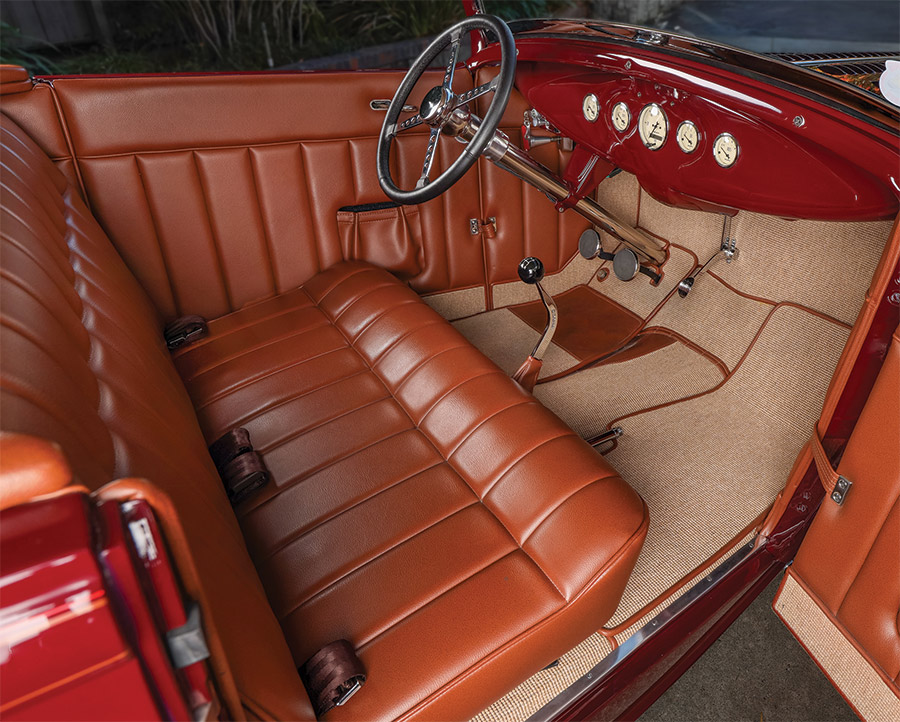

Additionally, the Deuce grille shell and insert were mint and a must use along with the Guide headlights. To this Art added a handful of custom one-off pieces, such as the rear tube bumper, the steering column drop, the fan shroud, and the front shock and headlight mounts. The windshield is a chopped ’32 with two freshly fabricated windshield posts.
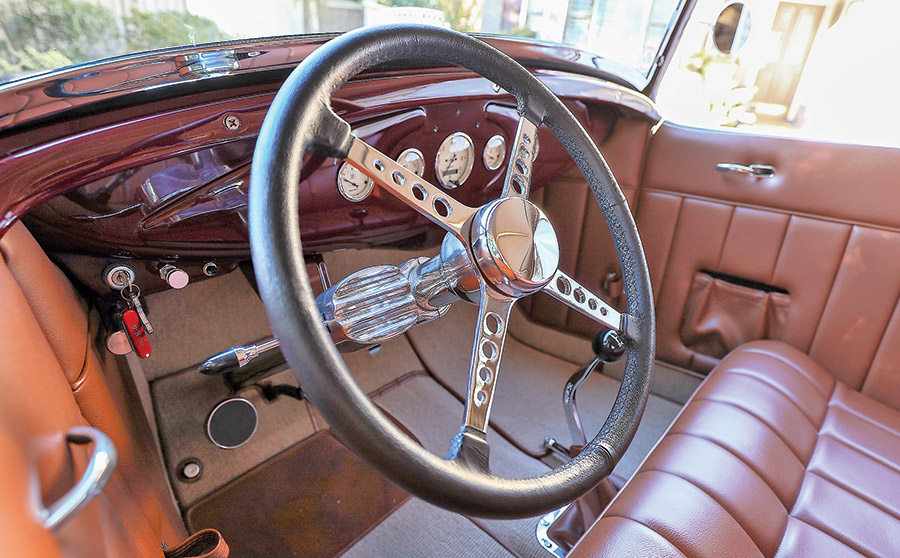


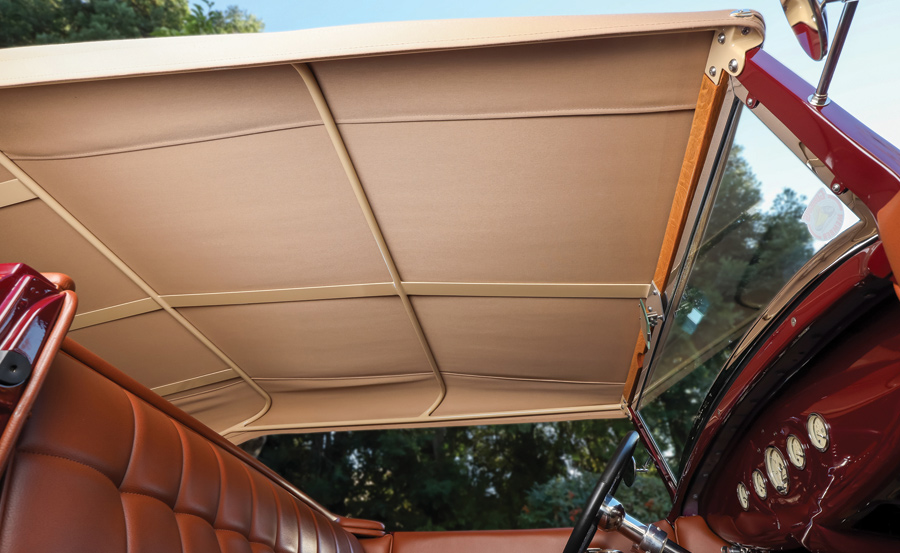
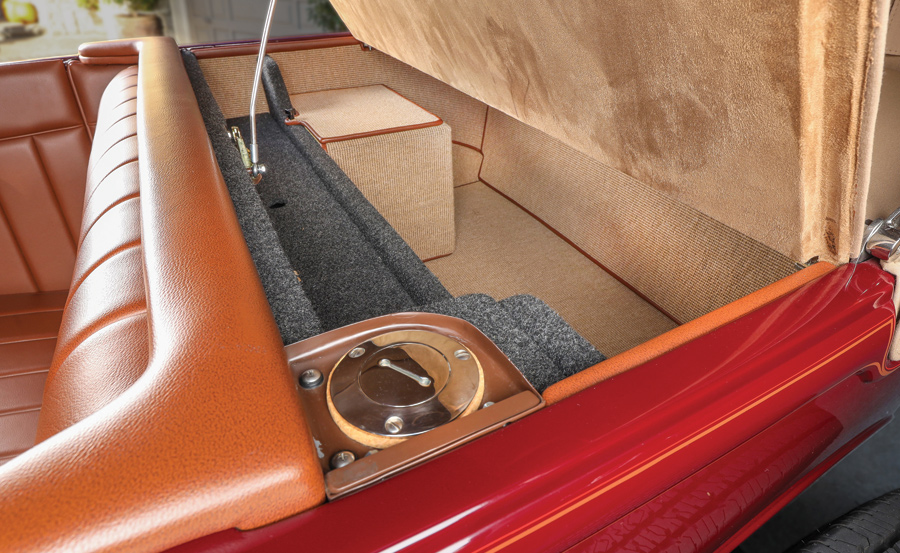
More performance goodies include the use of a Comp Thumpr cam (modern performance with the vintage solid lifter cam sound). Throw into the mix a traditional-looking PerTronix black cap distributor with a black coil canister, Taylor plug wires, a single V-belt, a “large” harmonic balancer, a Powermaster alternator, and an Optima battery. To position the five-blade mechanical fan in a more desirable location behind the radiator the use of a Zips water pump riser (six-cylinder) is utilized. Immediately inline behind the highly visible Tri-power is the use of the “camel hump” cylinder heads outfitted with 1.94-inch intake valves. The use of these heads from back in the day signify “big-valve” heads and performance. (There is also the 2.02-inch intake for the high winding dragstrip motor that could use the additional airflow.) To this day the camel hump heads along with the other components signify the glory days of carbureted performance.
All this vintage hardware is “housed” in an original ’32 Ford frame with a 3-inch extended wheelbase, now 109 inches, all fabricated by Art. (Side note: Art had purchased the frame years ago when a California Highway Patrol friend of his ran the VIN, stamped in the left rail, and found the title to be clean. Next step, he proceeded to obtain a non-op title for a ’32 Ford.) The ’rails are fully boxed, kicked up 4 inches in the rear, and “stepped” inward 2 inches on each side by the rear wheelwells. The popular Model A flat front crossmember is used. It lowers the front end approximately 1 inch over the stock Deuce front crossmember. There is also a tubular rear crossmember now in service. If you were looking closely, you should have noticed that the front framehorns are also shortened.
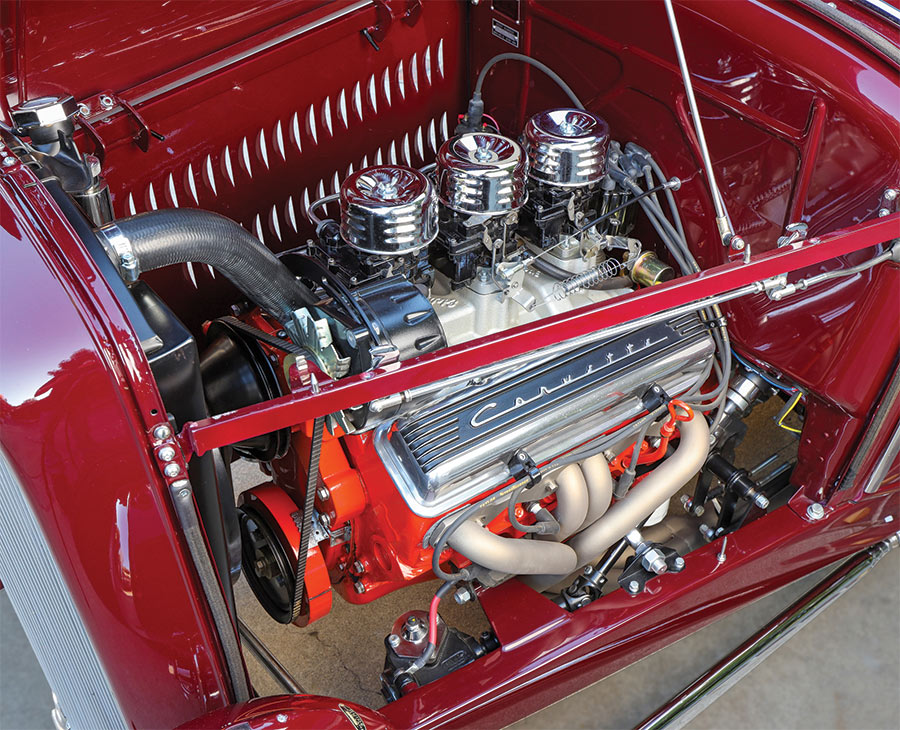
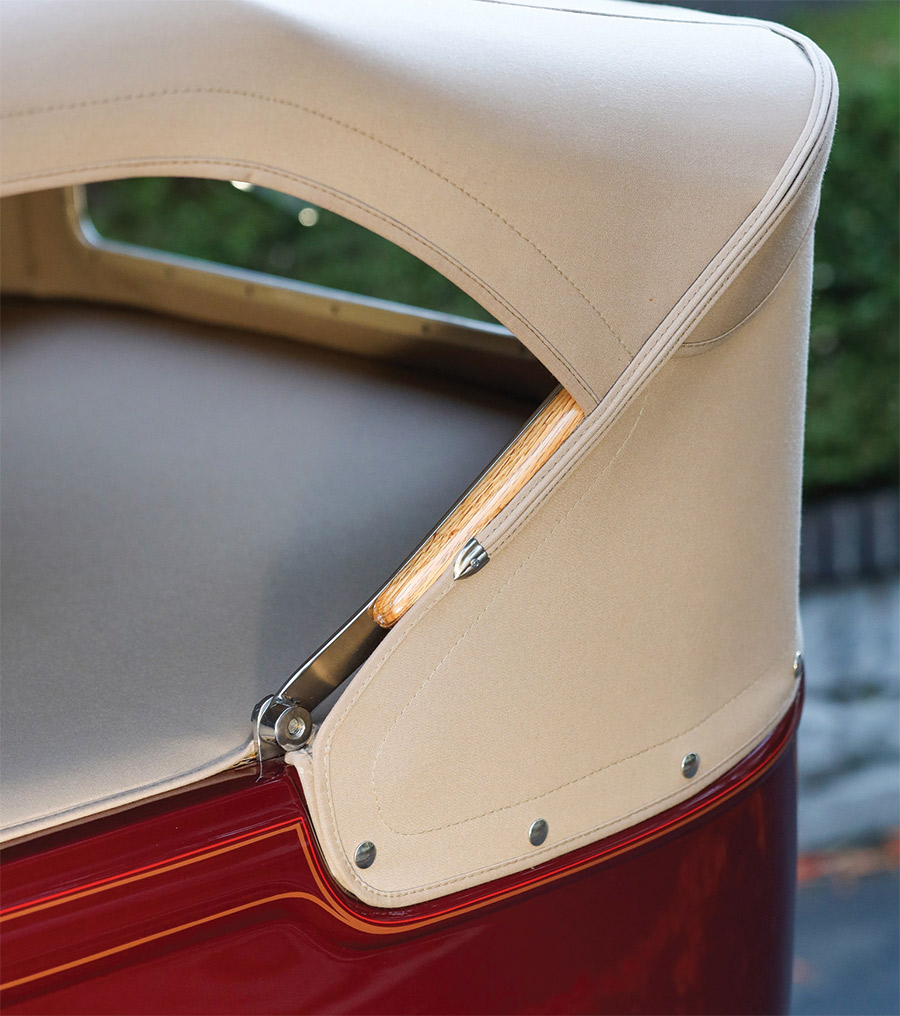
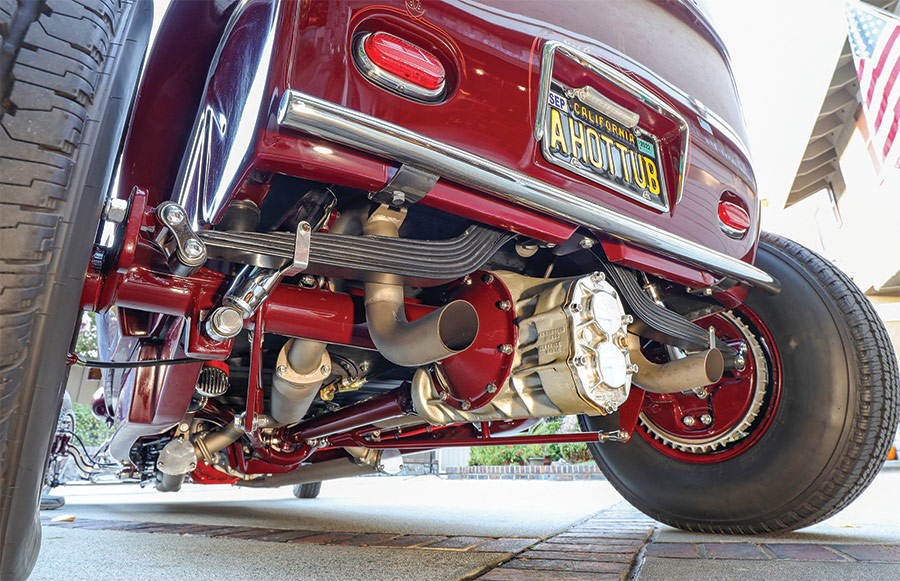
A phaeton is really a roadster with lots more legroom resulting from the back seat. However, in Art’s case the rear seat area is covered with a tonneau that hides the Tanks 14-gallon gas tank, the Optima battery in its own case, and ample storage for those long rides. The modified Wise Guys front bench seat comes with a heater for those cold drives and is stitched in brown vinyl by Kirby Kendell. The tan carpeting is stitched up in a square German weave that’s popular on so many hot rods. Next up was the top that proved to be a challenge. Art used tubing and the front and rear Oak headers from a Deuce roadster. From here it worked out well, yielding the necessary look.
The factory dash is now filled with Auto Meter five-pack of gauges. There is a sub-panel located on the driver side just beneath the dash to the left of the steering column that houses the ignition key and headlight switch. All the required wiring is handled by an American Autowire harness that was aptly linked by Barnhart and Art himself.
A few good hot rod buddies helped Art along on this project: Barnhart, Rossi, Bob Tomey, and Gary Mattei. The car was finished in January 2019, just in time to enter it in the Grand National Roadster Show in the Suede Palace. It’s good to see the once-omnipresent Ford phaeton back on the scene. Time to look for some more.
VOLUME 3 • ISSUE 21 • 2022